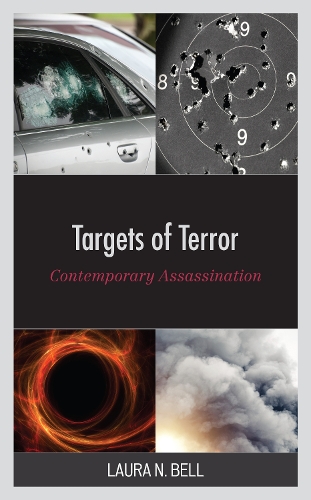
Targets of Terror: Contemporary Assassination
(Hardback)
Publishing Details
Targets of Terror: Contemporary Assassination
By (Author) Laura N. Bell
Bloomsbury Publishing PLC
Rowman & Littlefield International
29th June 2021
United Kingdom
Classifications
Professional and Scholarly
Non Fiction
Warfare and defence
Political ideologies and movements
364.1524
Physical Properties
Hardback
194
Width 160mm, Height 228mm, Spine 19mm
485g
Description
Targets of Terror: Contemporary Assassination, aims to address the repercussions of assassination as a tactic of terrorism and delineate post-assassination political and societal outcomes across target type. Assassination of heads of state, such as John F. Kennedy and Yitzhak Rabin, are rare events but the political murders of police personnel, local government officials, politicians, and journalists occur frequently. These softer targets (low-level and mid-level government officials, for instance) are often targeted during broader campaigns of terrorist violence and the Global Terrorism Database (GTD) records a significant number of these assassination events16,246 to be exactbetween 1977 and 2017.
Both qualitative and quantitative methods are utilized in this projectusing survival analysis to examine the span of time from a terrorist assassination to potential shifts in state political institutions. Changes in political institutions in authoritarian, mixed or tumultuous regimes are compared against democratic regimes (utilizing Polity score changes from the Polity IV Index as the indicator of institutional change and detailed further below). Repressive and non-repressive regimes are delineated and changes in political institutions are examined in order to determine the extent to which the type of assassination target may or may not be linked to political institutional change. The assassinations and target data is derived from the GTD and repression levels are measured using the Political Terror Scale (PTS).
Establishing differences in post-assassination political outcomes across regimes and target types provides a baseline study upon which to build future examinations of the types and severity of risks to governmental institutions as well as to the broader society.
Reviews
"Bell focuses her recent study, Targets of Terror, on the people terrorist organizations earmark to eliminate, ranging from local police officials to heads of state. She notes that assassinations of heads of state, such as JFK and Indira Gandhi, are rare but do happen. At other times, terrorists target people for perceived political grievances; for instance, Bell highlights the infamous attack on Charlie Hebdo in 2015. By targeting government officials, terrorists can effectively destabilize a government's civil infrastructure. Bell rightly claims that there is a gap in understanding who, what, when, and why some are marked for political assassinations. Her work seeks to explain why certain victims become targets and where fissures exist in the literature on terrorism that detail the consequences of those events. Bell's volume fulfills a pressing absence in the field involving politically motivated murder, which remains an issue for governments everywhere. Highly recommended. Undergraduates through faculty, professionals, and general readers." --Choice Reviews
"In this ambitious empirical study, Laura N. Bell, in Targets of Terror: Contemporary Assassination, explores the "who, what, when, where, and why" questions of terrorist assassinations. Bell has approached a difficult subject. Nevertheless offers food for thought." --International Journal of Intelligence and Counterintelligence
Bell focuses her recent study, Targets of Terror, on the people terrorist organizations earmark to eliminate, ranging from local police officials to heads of state. She notes that assassinations of heads of state, such as JFK and Indira Gandhi, are rare but do happen. At other times, terrorists target people for perceived political grievances; for instance, Bell highlights the infamous attack on Charlie Hebdo in 2015. By targeting government officials, terrorists can effectively destabilize a government's civil infrastructure. Bell rightly claims that there is a gap in understanding who, what, when, and why some are marked for political assassinations. Her work seeks to explain why certain victims become targets and where fissures exist in the literature on terrorism that detail the consequences of those events. Bell's volume fulfills a pressing absence in the field involving politically motivated murder, which remains an issue for governments everywhere. Highly recommended. Undergraduates through faculty, professionals, and general readers.
In this ambitious empirical study, Laura N. Bell, in Targets of Terror: Contemporary Assassination, explores the "who, what, when, where, and why" questions of terrorist assassinations. Bell has approached a difficult subject. Nevertheless offers food for thought.
Author Bio
Laura Bell is Assistant Professor of Political Science at West Texas A&M University.
